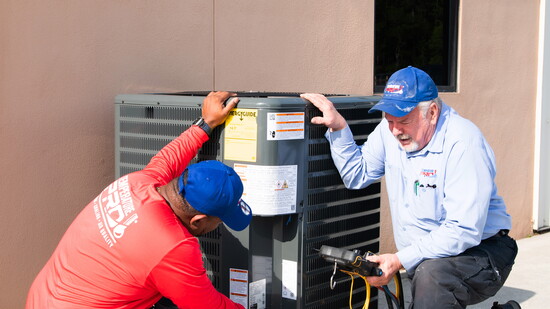When summer heats up, your air-conditioned home becomes more than a comfort—it becomes your family’s cool sanctuary. But while staying cool, something unseen could quietly impact your health. The air inside your home may contain pollutants that contribute to fatigue, headaches, and even respiratory issues from allergies. What is in the air we breathe indoors, and how can we fix it?
Many people don’t realize their homes could be filled with invisible pollutants. Carbon dioxide, volatile organic compounds, mold spores, and even the byproducts of candles and pets can build up without proper ventilation or filtration. Surprisingly, even your beloved dog can contribute. “Domesticated pets living indoors continuously produce CO2, steadily contributing to the buildup of CO2 within the home,” explains Antonio Cardona, Co-Owner of TemperaturePro.
One major issue in Florida homes is that air conditioning systems are designed to recirculate, not bring in fresh air. Over time, many homeowners shut off fresh air intakes to avoid humidity, resulting in higher CO₂ levels and stale air. That stagnant environment can lead to headaches, mental fog, and even poor sleep. “If you’re constantly yawning during the day or having trouble concentrating, your body might be trying to get more oxygen,” Cardona says. “Humidity and air quality go hand in hand. If you aren’t removing moisture, you are creating an ideal environment for mold to grow.”
A poorly maintained HVAC system only makes matters worse. When filters are dirty or systems are clogged, your air conditioner can’t cool properly or remove moisture from the air. That leads to an increase in indoor humidity—creating a breeding ground for bacteria and mold. Maintaining humidity inside your home between 40% and 60% is crucial to making it harder for mold to thrive.
So how can homeowners improve the air they breathe—especially during peak AC season? Cardona suggests upgrading to a four-inch pleated filter to capture more particles, adding ultraviolet (UV) light systems to kill mold and bacteria in the coils, or installing an ionizer that purifies air throughout the home. “Ionizers release positive and negative ions that cling to viruses and break them down. They also eliminate odors and reduce volatile organic compounds,” he explains. “With ionized air, even lingering smells from cooking or pets disappear. Your home smells clean—and more importantly, it feels healthy."
Modern air purifiers aren’t just for hospitals anymore. The same technology used on the International Space Station is now affordable for residential homes. “Today, you can install a system for around $1,200 to $1,800. That would have been impossible ten years ago,” Cardona notes.
One of the simplest things you can do are change your filters every three to four months, keep your thermostat between 72–75°F, and monitor humidity.
Cardona recommends a professional indoor air quality assessment if you’re experiencing symptoms you can’t explain, like chronic fatigue, headaches, or brain fog. “When your home’s air isn’t clean, your body knows before you do. But with the right tools, it’s fixable,” he says.
Ultimately, the air you breathe at home matters—and we often don’t think about it until we feel its effects. By taking simple steps and staying informed, families can breathe easier, live healthier, and make their homes a true sanctuary—inside and out. To learn more about keeping your air clean and safe for you and your family, visit www.temperaturepro.com/pasco-county-fl/.
